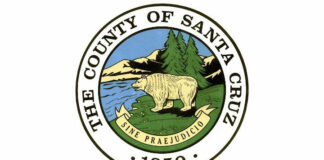
Redwoods in Maui?
I first heard about them at the Nature Center in Henry Cowell State Park. A sign at the center said they were grown for commercial reasons in Hawaii. So, now that I’m here on the island of Maui, I just had to see them for myself.
I knew redwood from our forests in Santa Cruz was used in the early 1900s for surfboards. They were tough and durable but also heavy, so the boards were redesigned in the 1930s, combining redwood with balsa. Balsa was hard to get in large quantities, so the boards were constructed of both — with balsa at the center and the rails of tougher redwood to strengthen the board.
But how did redwoods come to be planted in Maui?
Like our area in the Santa Cruz Mountains that was clear cut in the 1800s for lumber and to fuel the lime kilns, so too the forests of Maui were harvested in the 1700s. Sandalwood, exported to China for its fragrant aroma, became the island’s first cash crop. Millions of trees were logged from the mountain forests.
The men of the farming class were forced to cut trees, first on the lower slope and then farther up into the mountains, to pay for the chief’s acquisitions of weapons, warships and European imports. Further damage was done by livestock taken to the islands by Westerners — pigs, goats, sheep and especially cattle.
When the watershed was destroyed, the water disappeared for sugar cane, too. Reforestation started in the 1920s when nearly 2 million trees were planted annually. Fast-growing species like redwoods, cedars, sugar pines and eucalyptus were planted to increase the watershed. While these introduced trees and shrubs prevented catastrophic destruction, they produced sparse forests with fewer species than the complex, multi-layered systems created by native forests.
Fast forward to 1970, when the area was devastated by a wildfire. Hawaii is not an area that is renewed by fires like California. It destroyed most of the forest. However, the redwood trees survived.
This area must suit redwoods, as it is draped in clouds and fog at 6,000 feet, and many of the trees planted in the 1920s and ’30s are more than 100 feet tall. Now, the area is replanted with native trees, as well as 57,000 redwood seedlings that received a blessing at planting time. More redwoods were replanted because they are less prone to spread fire.
So, if you’re in Maui up near Haleakala Crater in Polipoli State Park, check out the quiet, serene Redwood Trail. Some of the trees probably came from redwood seedlings from our area.
• Jan Nelson, a California certified nursery professional at Plant Works in Ben Lomond, will answer questions about gardening in the Santa Cruz Mountains. E-mail her at ja******@*ol.com.












